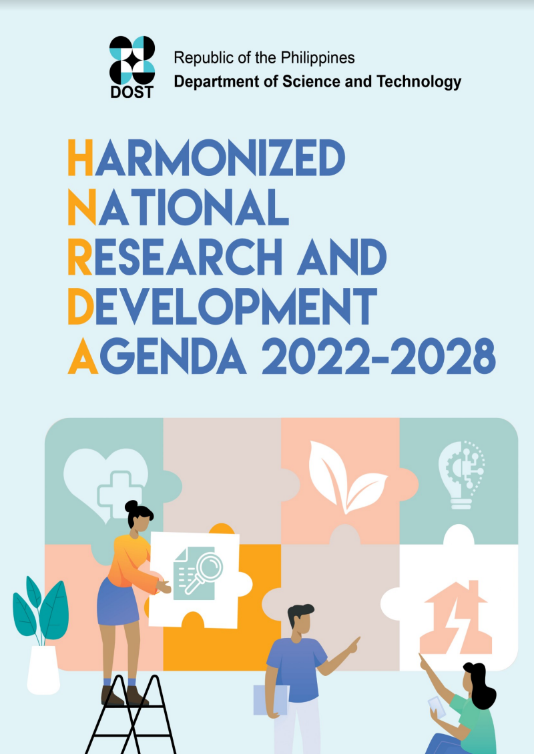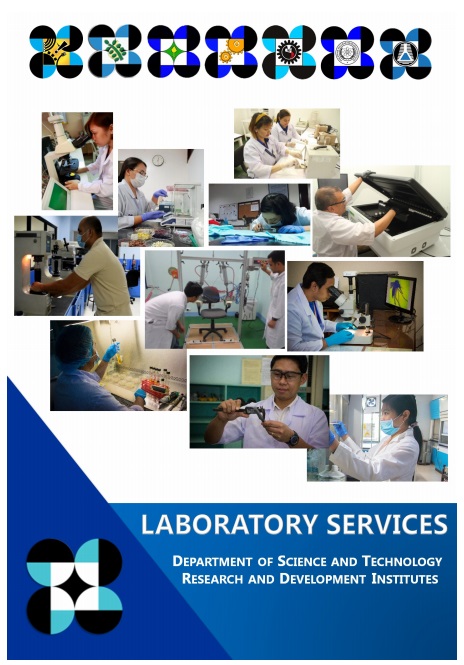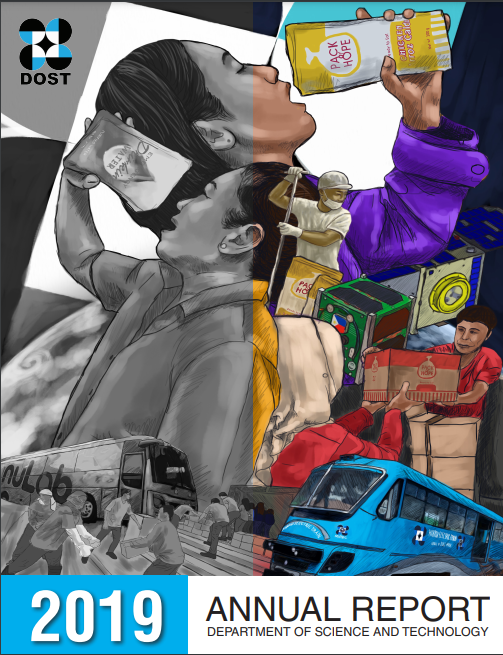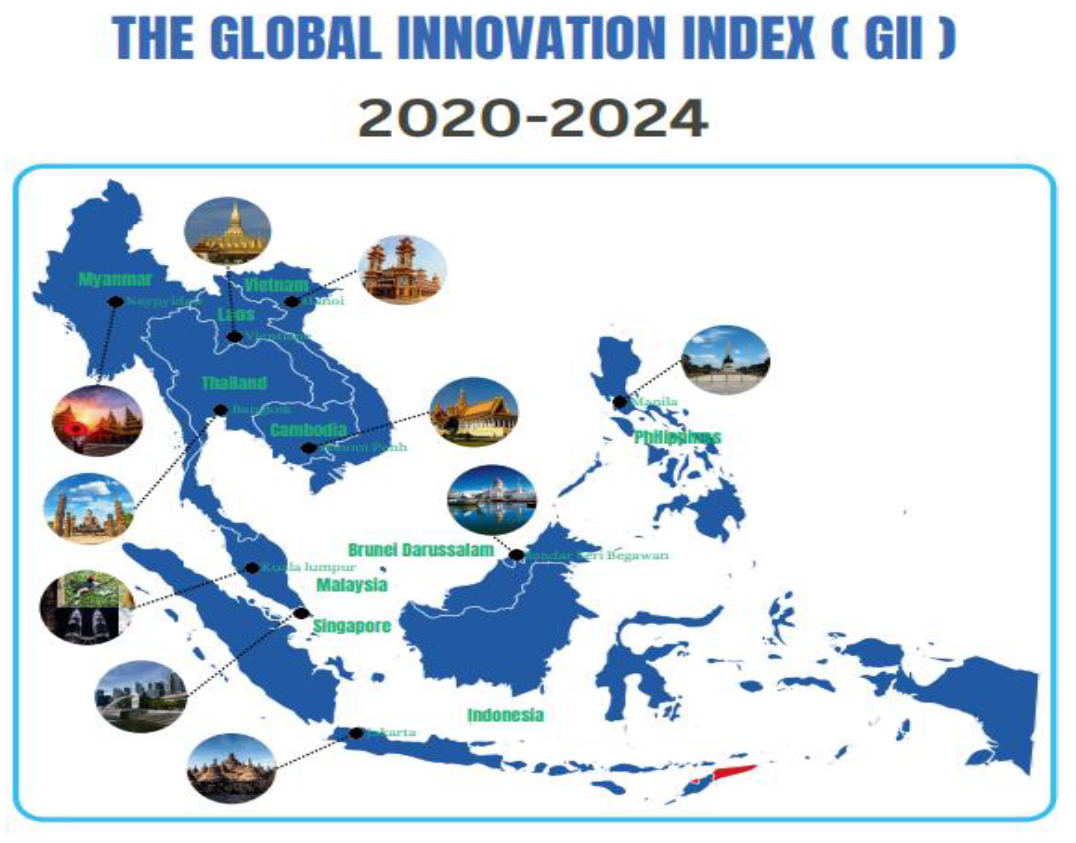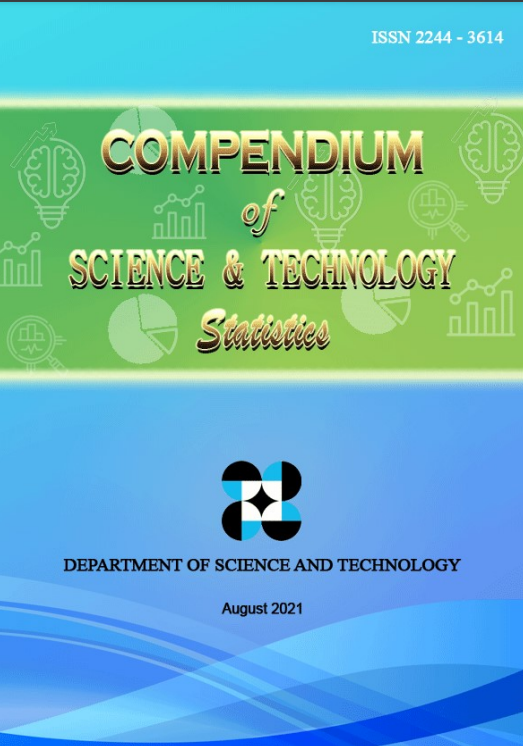DOST chief, UP prez test run the first ever Filipino-developed train
- Details
- Hits: 17567
First they laid the track. Now they ride the coach. In the maiden test run last Friday of the country’s first ever train developed by local experts, Department of Science and Technology (DOST) Secretary Mario G. Montejo and University of the Philippines (UP) President Alfredo Pascual personally board the train to see how the ride goes.
The train, also called the Automated Guideway Transit System or simply AGTS, is designed by DOST engineers in consultation with UP experts. The AGTS’s test run, when completed, would establish the train’s speed and capacity; polish its mechanisms, controls, power, and stress systems; and fine-tune its troubleshooting procedures. The goal is a fully-automated and emission-free transportation capable of carrying up to 60 passengers per trip.
The AGTS is one of DOST’s solutions to the worsening vehicular traffic in Metro Manila and in other metropolitan areas in the country.
More than creating a Filipino train version, according to Secretary Montejo, part of the goal is to “train local engineers to operate their own designed transport system and enhance their competency in the area of transportation technology.”
Plus, developing the train costs just about one fifth of the cost of acquiring a similar foreign train. “We want to locally fabricate the components to make the vehicle cost-effective and sustainable,” Secretary Montejo said.
Meanwhile UP President Alfredo Pascual, when asked about the economic benefits of the AGT said, “One practically stimulates the economy by reducing costs, speeding up the movement of people, or developing an industry.”
He also said that the AGT can help reduce pollution inside the campus. Moreover, the AGTS being an electric-ran transport system, helps mitigate the effects of climate change.
Meanwhile, UP Diliman Chancellor Caesar Saloma said that the AGT test site also serves as a good laboratory site for the university’s engineering students.
Like the Manila Metro Rail Transit (MRT) in EDSA, the DOST-UP AGT is fully-air-conditioned, spacious, and has a fine industrial design. One difference of the AGT over the former, on the other hand, is the lack of cables suspended above and along the track as its DC-electrical system is built along the guideway itself. This gives it a “cleaner look” according to its designers.
The train’s 465-meter guideway or test track stretches from the College of Fine Arts to CP Garcia Avenue, where it makes a 25-meter radius curve to the direction of the University Avenue where the tracks stop. The guideway is made of high-quality concrete and stands at an average height of 6.1 meters.
The testing stage is scheduled to finish by June next year, while results and recommendations that will come out from the test will become bases for designing a regular-sized version of the train to be built in Taguig City, adjacent to the DOST Complex. The next AGT would accommodate up to 120 passengers, twice the UP Diliman version’s current capacity.
Meanwhile, designers of the AGTS also clarify that the AGT is “not monorail.”
“The AGTS was initially designed as a monorail but subsequent modifications from last year’s prototype no longer fits the AGTS into that category,” explained Engr. Elljay P. Mutuc, one of the train’s designers.
He said that what differentiates the AGTS from a monorail system is that the AGTS rolls on two rails instead of one. Moreover, the monorail has narrower guideways with respect to the coaches’ widths, but the AGT moves along two parallel bars whose distance across almost equals that of the coaches, he said.
One of DOST’s High-Impact Technology Solutions or HITS, the AGTS is being developed through DOST’s consultations with the UP National Center for Transportation Studies, College of Engineering, and the National Institute of Geological Sciences.
The project’s lead implementing agency in DOST— the Metals Industry Research and Development Center (MIRDC)—constructed the train’s main mechanical frameworks or “rolling stocks”, and subcontracted local companies Miescor Builders and Fil-Asia Automotive to construct the guideway and the coaches, respectively, based on the design team’s specifications.
The Philippine Council for Industry, Energy and Emerging Technology Research and Development (PCIEERD) funded the project under the MakiBayan Program, short for “Makina at Teknolohiya para sa Bayan”, of MIRDC.
Meanwhile, UP has expressed plans to conduct a study on the marketability of the AGT, and pledged full commitment to provide the test site its needed security.

Joyride. Making sure that the Automated Guideway Transit (AGT) runs smooth, the Department of Science and Technology Secretary Mario Montejo (right) leads the inspection and rides the AGT maiden test run, a 465-meter ride through a guideway system that stretches from the University of the Philippines (UP) College of Fine Arts up to the University Avenue. Also in photo are UP President Alfredo Pascual (left), UP College of Engineering Dean Aurea Matias (right, front), UP Vice President for Public Affairs Prospero De Vera, and Vice President for Development Elvira Zamora. The AGT project is a joint project of DOST and UP Diliman that aims to reduce traffic and air pollution in Metro Manila. (Photo and text by Joy M. Lazcano, S&T Media Service, STII) 
Department of Science and Technology’s (DOST) Automated Guideway Transit successfully fulfilled its maiden test run recently. The AGT, a joint project of DOST and UP Diliman, aims to reduce traffic and air pollution in Metro Manila. Photo shows DOST Secretary Mario Montejo (left), UP President Alfredo Pascual (2nd from left), DOST Assistant Secretary for Strategic Plans and Programs Robert Dizon (center behind Pres. Pascual), along with other UP officials, during the AGT maiden test run. (Photo and text by Joy M. Lazcano, S&T Media Service, STII)

First Filipino-developed train. The Automated Guideway Transit System or AGT is an elevated transportation developed by engineers of the Department of Science and Technology to address the worsening traffic congestion in Metro Manila. The 465-meter concrete guideway built inside the UP Diliman Campus serves as a test site to fine-tune the train’s speed, power, controls and stress systems. The testing phase will finish by June 2013 and any result will be used to construct a higher-capacity elevated carrier in Taguig City. (Photo by DOST-MIRDC)
DOST’S “Smarter Philippines” project to strengthen industries thru ICT
- Details
- Hits: 10934
The Information and Communications Technology Office of Department of Science and Technology (DOST-ICTO) recently introduced its upcoming flagship program that is expected to speed up the country’s economy towards substantial growth via ICT.
Called “Smarter Philippines”, it is a program that will use ICT as enabling tool to provide more efficient and reliable services in some priority industries in the country. It has several components such as Smarter Governance, Smarter People, Smarter High-Tech Industry, Smarter Computing, Smarter SME’s, Smarter Agriculture World Development, Smarter Environmental Healthcare, Energy and Transport, Smarter Disaster and Mitigation Public Safety and Smarter Cities.
Alejandro P. Melchor III, deputy executive director for ICT Industry Development of ICTO, recognized the capability of ICT in boosting the country’s economy by touching numerous industries.
Melchor expounded that, though some sectors like agri-business are not directly related to ICT, there is still a system in ICT that could give huge boost to this sector.
“DOST with the ICT office intends to transform every aspect of society through technology innovation. Actually, Smarter Philippines is a new program that will fuel tremendous growth to the ICT industry and create tremendous demand for engineering, content development, and domestic ICT industry,” Melchor said.
Melchor also shared that though the program is still to be launched, some of its components are now in operation. It includes some initiatives in governance, disaster risk reduction, and bringing Information Technology-Business Process Outsourcing (IT-BPO) investments in cities in the countryside.
One component is iGovPhils, a landmark program that aims to enhance the e-capabilities of the government in addressing the president’s call for transparency by putting relevant mechanisms to implement interactive, interconnected, and efficient government collaboration.
Another is Program NOAH, DOST’s banner project that will set up a more responsive disaster preparedness system to reduce, if not eliminate, human casualties from rain- triggered natural hazards.
Still another component is Smarter Cities, also known as Next Wave Cities Program, which creates career opportunities in the countryside by promoting different areas in the provinces as suitable BPO destinations.
ICT industry mapping project
ICTO also launched its newest project, in collaboration with the Statistical Research and Training Center (SRTC), called the held a press briefing of its new ICT Industry Mapping Project.
Melchor emphasized the importance of formulating industry mapping to be able to understand the dynamics within the sector as well as its linkages outside the sector towards to a wider economy.
Under the Domestic ICT Industry of ICTO, this project seeks to obtain information integral to the development of strategic ICT industry programs to help increase the potential of the ICT industry in pushing the country’s socio-economic development.
Particularly, the project will come up with a description and examination of the state and performance of the ICT industry as a whole and by segments. It will also measure employment and income contribution, and identify the sector or segment needs that have not yet been addressed by government policies and programs.
LITTLE SCHOLAR HOPEFUL
- Details
- Hits: 4238

He may just be a little above three feet in height but Kent Dominique C. Solitarios, 15, of Tamangan, Western Samar, shows his towering hope as he takes the nationwide 2013 S&T Scholarship Examination this November at the Samar National High School in Catbalogan, Western Samar. Conducted yearly by the Department of Science and Technology’s Science Education Institute, the examination gives equal opportunities to the youth interested in taking up careers in science, technology, and engineering.
DOST-funded software to help call center agents, students speak better English
- Details
- Hits: 6684
The Philippine call center sector, called the sunshine industry a few years back, is set for even brighter days ahead as it receives a much needed boost with the release of a language training software that aims to teach Juan dela Cruz how not to mix his Fs and Ps and speak better English.
The Department of Science and Technology (DOST), through its sectoral council, the Philippine Council for Industry, Energy and Emerging Technology Research and Development (PCIEERD), in partnership with the University of the Philippines Diliman, launched the trial version of the software, called the “Learning English Application for Pinoys” or LEAP last November 22 at the Eastwood Richmonde Hotel in Quezon City.
Program LEAP is categorized under Project 7 of the ICT for Education Inter-disciplinary Signal Processing for Pinoys Program, or ISIP, which is part of DOST’s Engineering Research and Development for Technology initiative.
A computer-based stand-alone training system, LEAP is a supplementary tool to prepare high school and college students for the call center industry in a bid to help the country regain its footing as a stronghold of English language competency and push it further into the forefront of the global BPO industry.
“DOST supports this project in the hope of raising the level of skills and competencies of Filipinos working in the BPO industry or seeking employment in the BPO industry or any other industry for that matter,” said DOST Secretary Mario G. Montejo in his keynote speech read by Dr. Rowena Cristina L. Guevara, PCIEERD executive director.
During the launch, Dr. Susan P Festin, ISIP 7 project leader, cited a study by the Social Weather Station which indicated that Filipinos’ English language ability has been sliding since 1993. Another study, undertaken in 2005, found that the hiring rates of IT-BPO companies in the country were only four to six percent, with poor English skills cited as a major drawback.
Earlier, Dr. Guevara delivered the welcome remarks at the launch attended by representatives from the Department of Education (DepEd), Commission on Higher Education (CHED), Business Processing Association of the Philippines (BPAP), and the Department of Trade and Industry-Board of Investments (DTI-BOI), among others. “We have realized that science and technology, and the number of people who are doing science and technology, are very good indicators of progress,” said Dr. Guevara.
The newly launched trial version constitutes half of the LEAP software covering a 10-module Language Training Program. The Linux and Windows-based program tackles the groundwork for English fluency—from tenses, pronouns and prepositions, to idioms and other basic topics related to grammar and vocabulary.
The other half of the software features its Speech Training Program which will tackle Filipinos’ common speech lapses, among others.
The launch was highlighted by a demonstration and presentation of the software courtesy of Dr. Festin and the turnover and distribution of LEAP CDs. Demo computers were also available to allow guests to try out the trial version and have a glimpse of LEAP’s Speech Module.
Prior to the launch, the software underwent usability testing in various schools including the Bulacan State University and Negros Oriental State University, among others.











